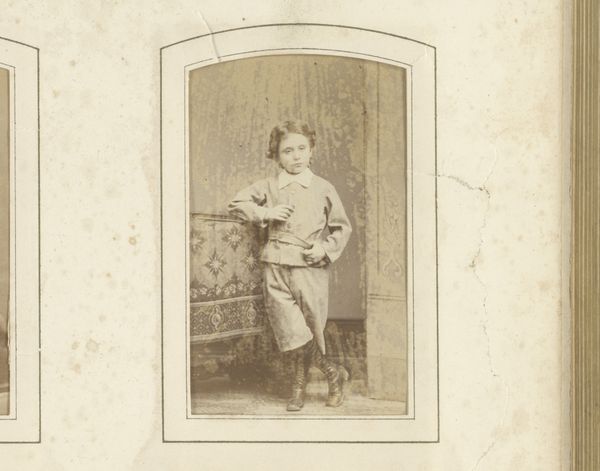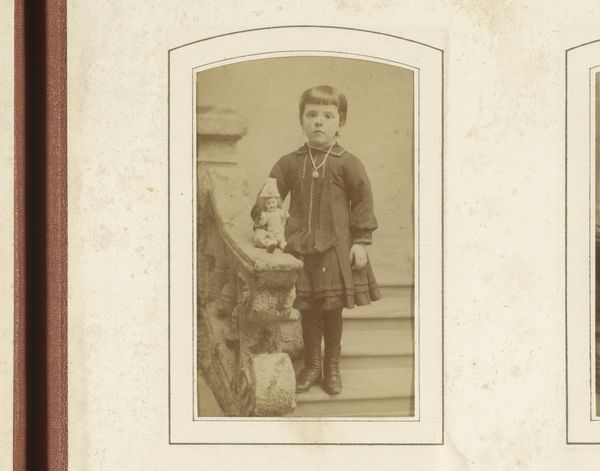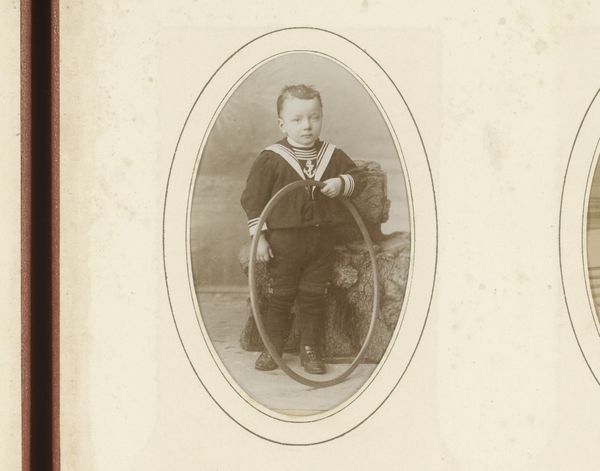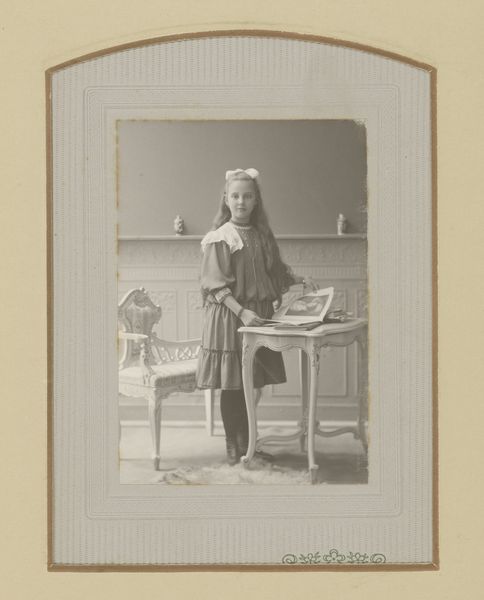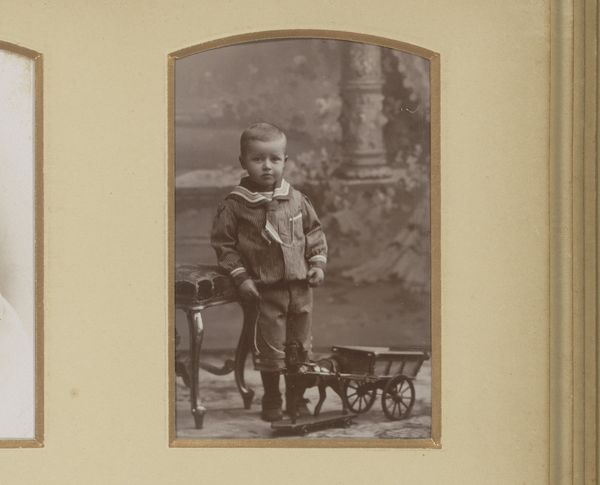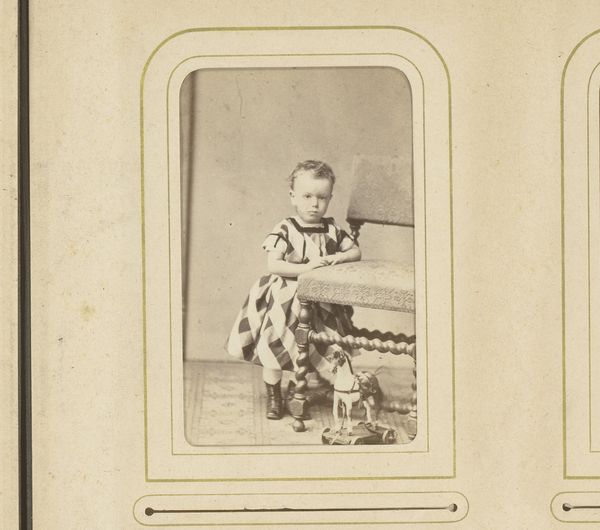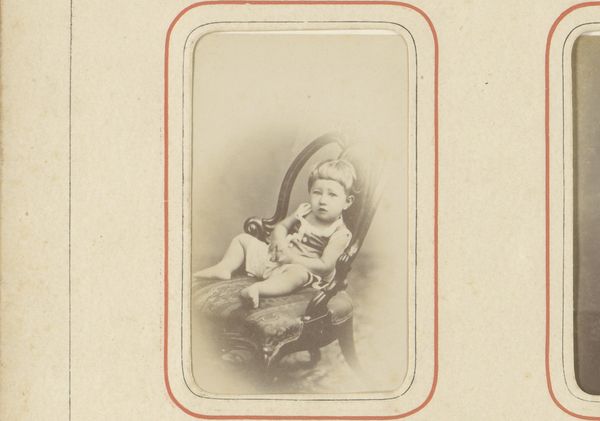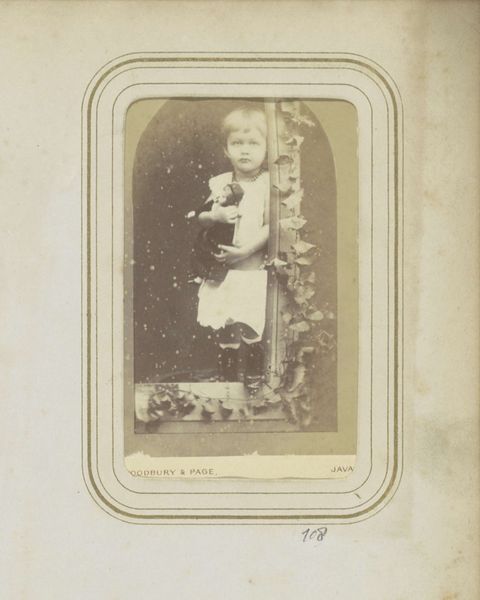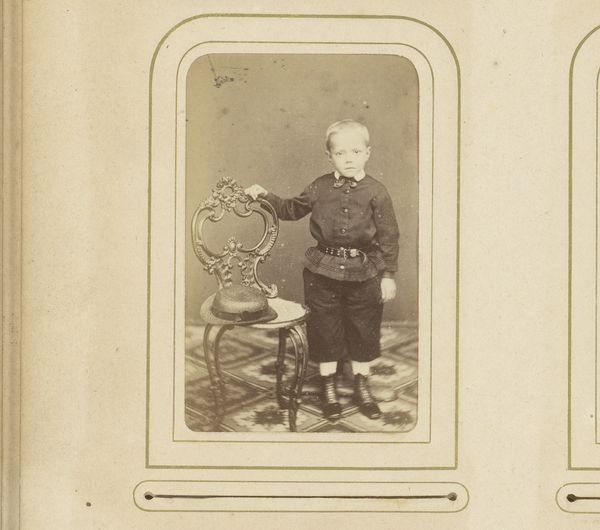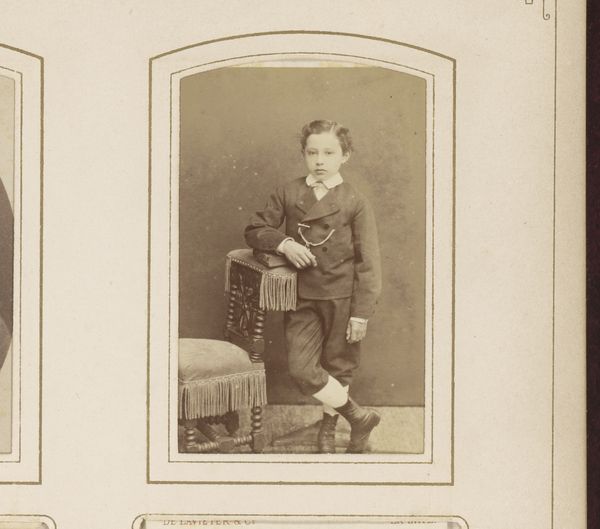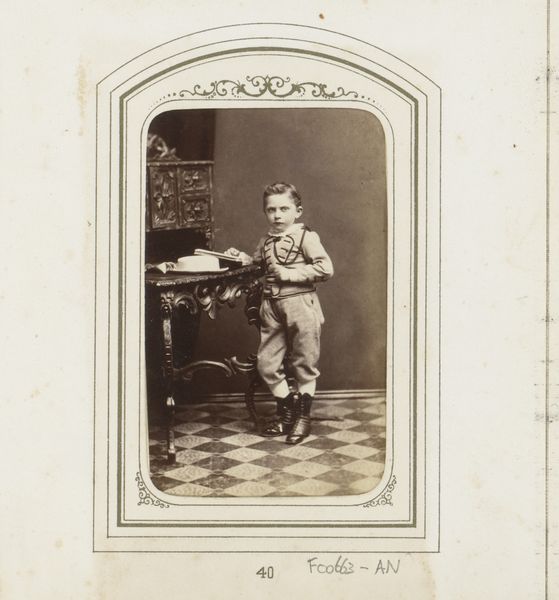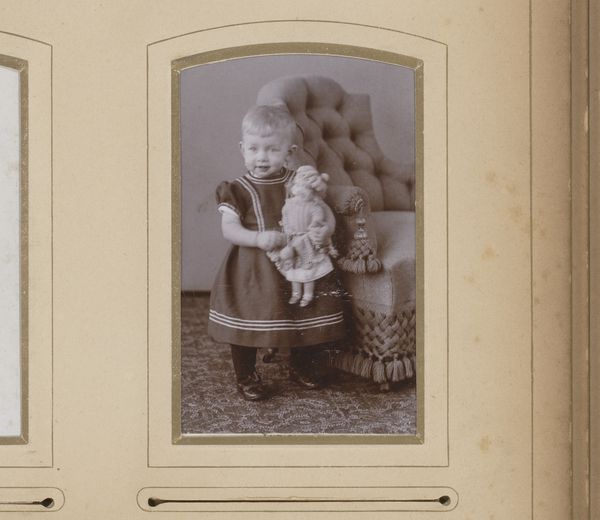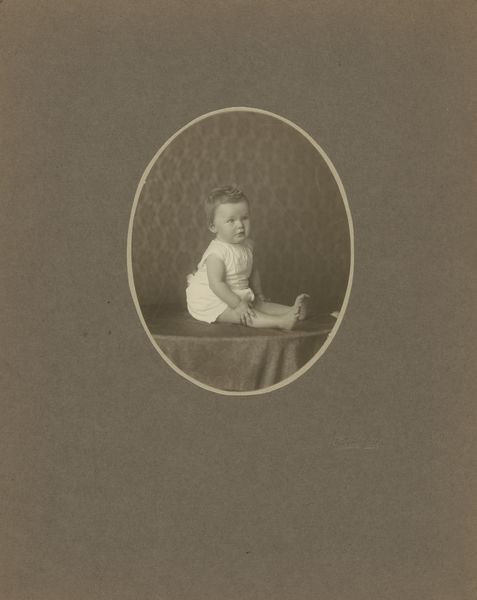
Portret van een jongen met hoepel in de hand, staand bij een stoel met speelgoed paard 1885 - 1906
0:00
0:00
photography, gelatin-silver-print
#
portrait
#
photography
#
historical photography
#
gelatin-silver-print
#
19th century
#
genre-painting
Dimensions: height 85 mm, width 52 mm
Copyright: Rijks Museum: Open Domain
Editor: Here we have a gelatin silver print from between 1885 and 1906, entitled "Portret van een jongen met hoepel in de hand, staand bij een stoel met speelgoed paard," credited to W.G. Kuijer & Zonen. It's a touching image; there’s something about the formality and innocence captured that is quite compelling. What strikes you about this piece? Curator: What immediately stands out to me is how this seemingly simple portrait is laden with societal implications. The boy’s sailor suit, for example, speaks to notions of national identity and perhaps even burgeoning colonialism of the period. His posture, though innocent, is carefully constructed, reflecting the constraints placed upon children, particularly boys, regarding their roles in society. Editor: That's a really interesting point. I hadn't considered the performative aspect of the image. The toy horse also seems symbolic; wouldn't you say? Curator: Absolutely. The toy horse, juxtaposed with the child, presents a narrative about power, control, and even gender. The horse is a classic symbol, historically linked to masculinity and dominance. Here, rendered as a plaything, what commentary might this image offer on boyhood and its relationship to these larger societal forces? Does it affirm those associations, or perhaps even critique them through the lens of childhood innocence? Editor: So, you're suggesting the photo isn't just a snapshot, but a reflection of the era's values? Curator: Precisely. These staged portraits offer a window into the constructed nature of identity, particularly regarding class and gender, during that historical period. It invites us to question the narratives presented and the underlying power structures. What do you think this tells us about how families wanted to be perceived at that time? Editor: I see what you mean. I think the formal nature and the symbols used definitely provided a clear message for public perception. Thank you, it's been very helpful! Curator: Indeed, and it prompts us to reflect on how such performances of identity continue to shape our own contemporary world.
Comments
No comments
Be the first to comment and join the conversation on the ultimate creative platform.
